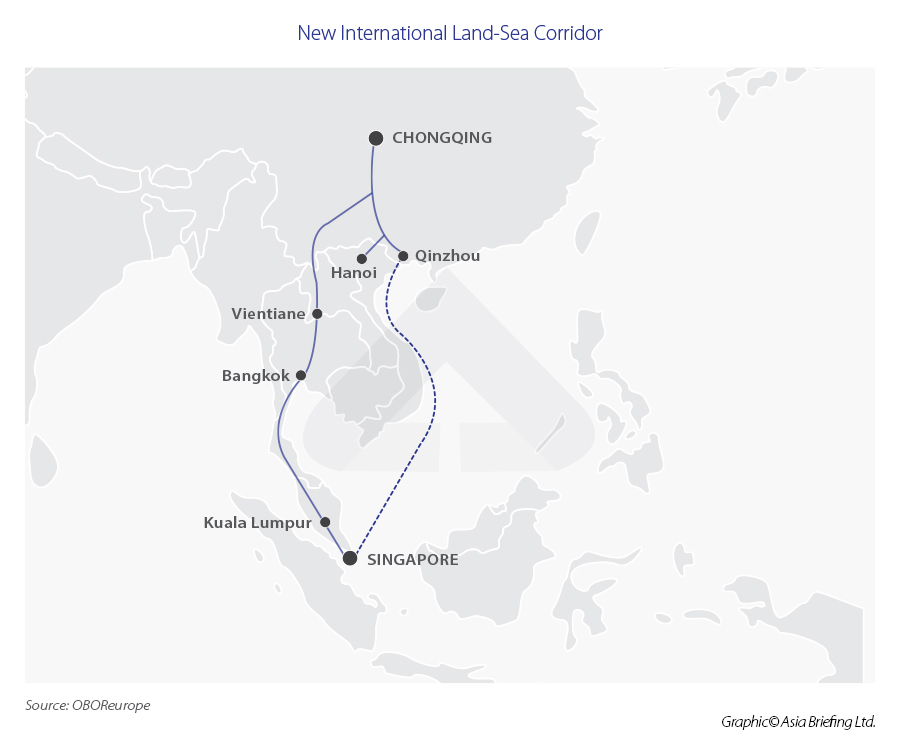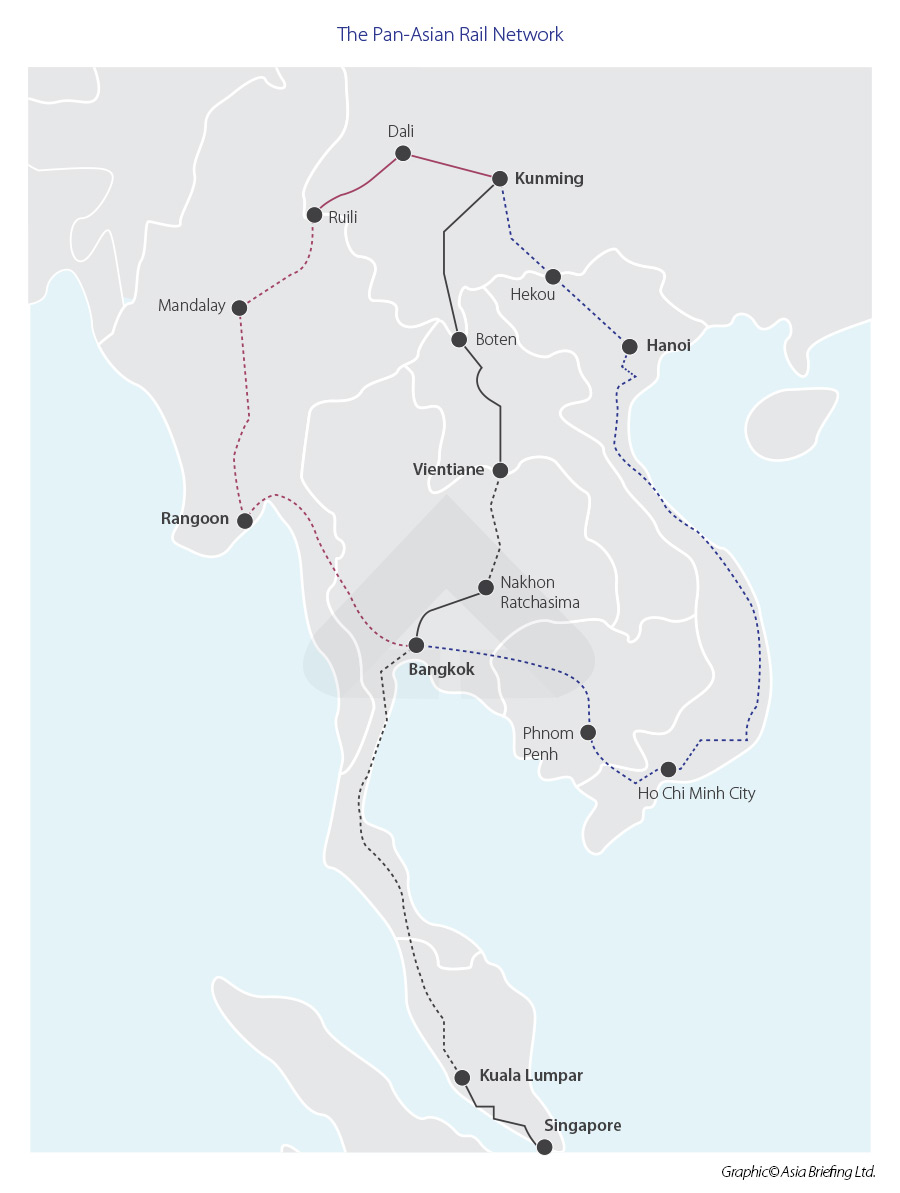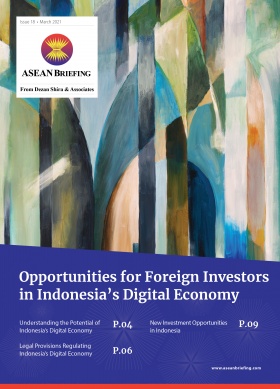China Launches New Freight Train Services to Vietnam
China has launched new freight train services to Vietnam from the cities of Chengdu and Chongqing, enabling Vietnam and ASEAN exporters to establish new trade opportunities with Western China. The freight routes reduce the transportation time from an average of 20 days to between five and seven days. The increasing costs for air and sea cargo shipping have renewed interest in freight rail, which has helped stabilize global supply chains amid the COVID-19 pandemic and offered a lifeline for the distribution of goods, and anti-virus materials amid nationwide lockdowns.
China has launched several new freight train routes from its western cities of Chongqing (Guoyuan Port) and Chengdu to Vietnam’s capital Hanoi. Although there are regular freight trains from China to Vietnam, these are the first from China’s western regions.
On March 23, 2022, a freight train left the city of Chongqing for Hanoi – containing 43 containers of tires, printing papers, and engines, among other items, and worth US$3.9 million. On April 15, the first freight train from the city of Chengdu, also bound for Hanoi, began operations, transporting some 40 containers of aluminum profiles worth US$4.9 million.
The value of cargo on cross-border freight trains between China and Vietnam has tripled since the beginning of 2022. The Pingxiang Railway Port, located on the China-Vietnam border, saw US$972 million worth of goods in the first quarter, a 240 percent year-on-year increase.The skyrocketing shipping rates and delays for cargo ships have companies scrambling for shipping alternatives. For exporters in Europe and China, the land links have spurred renewed interest in rail freight and present direct opportunities to enhance trade between China’s western regions with not only Vietnam but also ASEAN.
The New International Land-Sea Trade Corridor
The Chongqing-Hanoi freight train route is part of the New International Land-Sea Trade Corridor (ILSTC), a trade and logistics passage developed by the western Chinese provinces of Chongqing, Guangxi, Guizhou, Gansu, Qinghai, Xinjiang, Yunnan, and Ningxia and Singapore.
With Chongqing as the transport hub, the ILSTC integrates rail, maritime, and road transportation – which connects southwestern China with the rest of the world via the Qinzhou Port in Guangxi. There, goods are shipped to ports across the world. Previously, goods from Chongqing to Vietnam took an average of 20 days to travel using water transport to Shanghai. With the new rail route, the transport time has been cut to between four and five days.
The Chengdu-Hanoi route
A freight train leaving Chengdu takes approximately seven days to reach Hanoi. The train crosses the Pingxiang Railway Port in Guangxi province before crossing the Vietnamese border.
A new rail network has opened to facilitate trade between Chengdu, China, and ASEAN. Under the Belt and Road Initiative (BRI), the city of Chengdu has gained prominence as an economic, logistics, and commercial hub in western China. The city also has China’s fourth-largest airport, the Chengdu Shuangliu International Airport, and the combined air-rail transportation channels provide advantages for businesses in terms of costs and time efficiency compared to the sea, air, and road transport.
The term was coined by the then President Hu Jintao and refers to China’s fear of maritime blockage at the Straits of Malacca — more than 60,000 vessels pass through the strait each year which includes half of the world’s oil flows and one-third of the world’s seaborne trade. A maritime blockade of the straits could cripple China’s economy since the majority of the country’s oil imports passed through the straits.
Connecting Vietnam to Europe by rail
Vietnam launched its first rail freight service to Europe in 2021 with the first container leaving Hanoi in July 2021 and arriving in Liege, Belgium, one month later. From Liege, the cargo was shipped by road to the port of Rotterdam in the Netherlands. However, currently, freight traffic is suspended due to the Russia-Ukraine conflict. Moreover, Vietnam had also planned a second connection to Liege from Da Nang before it was suspended due to the situation in Ukraine.
The first route initially transits through China until it reaches the city of Zhengzhou where it will interchange with the China-Europe express route, through to Kazakhstan and Russia, before passing through Belarus.
As of January 2022, more than 4.55 million twenty-foot equivalents of goods have been transported from China to Europe via freight trains, and more than 100,000 tons of anti-pandemic supplies have been sent to Europe from China via freight trains. This further highlights the increasing importance of the China-Europe freight train service in stabilizing global supply chains.
Realization of the Pan-Asian railway
With the China-Laos railway also coming into operation at the end of 2021, the latest freight train network from Vietnam showcases improved connectivity between ASEAN neighbors and China. For instance, the China-Laos railway can transform Laos from being a landlocked country and the least industrialized in ASEAN into a land-linked hub that can facilitate greater trade in the region.
The Boten-Vientiane line is an integral part of the Pan-Asian railway network. The network has three routes: the central route from Kunming to Laos and finally Bangkok; the western route, which extends through Myanmar and Thailand; and the eastern route crossing Vietnam, Cambodia, and Thailand before connecting in Bangkok and extending southwards towards Malaysia and Singapore.
The transit of trade through Laos can shift an estimated 1.5 million tons of maritime transport to the railway, and reduce the maritime routes that ASEAN-China trade heavily relies upon.
Further Reading
- Vietnam Electricity Reforms Spark Opportunities for Foreign Investment
- Opportunities for Foreign Investors in Vietnam’s Coffee Industry
- Vietnam Amends Rules on Labeling Goods, in Effect from Feb.15, 2022
About Us
ASEAN Briefing is produced by Dezan Shira & Associates. The firm assists foreign investors throughout Asia and maintains offices throughout ASEAN, including in Singapore, Hanoi, Ho Chi Minh City, and Da Nang in Vietnam, Munich, and Essen in Germany, Boston, and Salt Lake City in the United States, Milan, Conegliano, and Udine in Italy, in addition to Jakarta, and Batam in Indonesia. We also have partner firms in Malaysia, Bangladesh, the Philippines, and Thailand as well as our practices in China and India. Please contact us at asia@dezshira.com or visit our website at www.dezshira.com.
- Previous Article Unterstützung der nachhaltigen Entwicklung in Singapur
- Next Article Comparing Mexico and Indonesia as Manufacturing Hubs for US Investors









